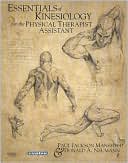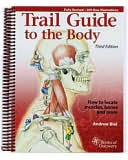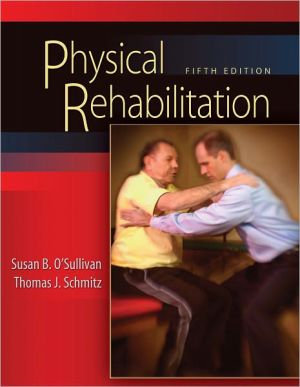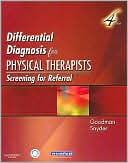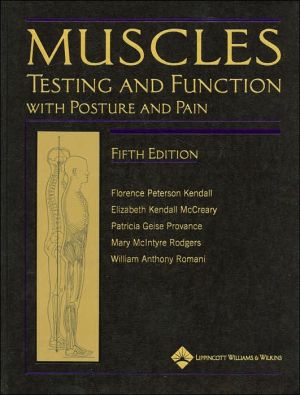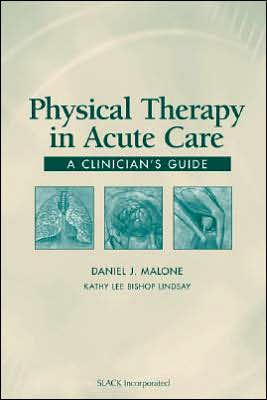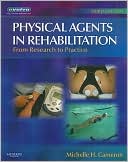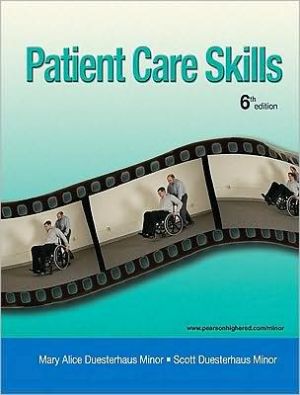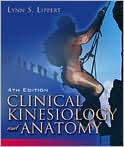Essentials of Kinesiology for the Physical Therapist Assistant
Search in google:
With clear, concise explanations and detailed illustrations, ESSENTIALS OF KINESIOLOGY FOR THE PHYSICAL THERAPIST ASSISTANT is designed specifically for fast-paced PTA programs. This book makes even the most complex and daunting content logical and easy to understand by starting with the basic principles of kinesiology and building up to the applied presentation of upper- and lower-extremity areas of the body. A unique atlas-style layout used in body-region chapters pairs an illustration of an individual with a listing of that muscle’s attachments, innervations, and actions, providing you with valuable information in an excellent visual reference. This student-friendly book also features chapter outlines, key terms, learning objectives, clinical feature boxes, and much more to make learning easy.Nearly 400 high-quality images used throughout the text visually reinforce key concepts.Clinical Insight and Consider This… boxes detail kinesiologic issues specifically related to clinical practice and special interest to help you focus on how principles are applied in practice and how they affect people’s everyday lives.At the end of each chapter, Summary Boxes provide a visual summary of the key topics covered in the section to help you make sure you’ve grasped the content.Study Questions at the end of each chapter help you prepare for examinations.Key Terminology listings in each chapter, with definitions in the glossary, help you master the language of kinesiology.Additional Readings, with a listing of sources for additional reading, provide you with sources for more information on topics of interest.Learning Objectives listed at the beginning of each chapter give you an overview of the chapter and a checklist to help prepare for examinations.The approachable writing style simplifies complex topics and tailors information to your needs as a PTA student.Practicing terminology is easy with the Evolve website’s online flashcards and labeling exercises, plus a bibliography simplifies research and helps you quickly find what you need. Doody Review Services Reviewer:Deborah M. King, PTA, CPI(North Hills Orthopedic and Sports Physical Therapy)Description:This comprehensive book on the principles of kinesiology for physical therapist assistant (PTA) students as well as practicing clinicians provides detailed outlines, explanations, and an abundance of relevant illustrations in each chapter.Purpose:The purpose is to provide PTA students with a detailed study of normal and abnormal human movement. The book offers detailed background on anatomy and function as well as treatment options. This book would be a worthwhile addition to any PTA curriculum. Audience:Written for both PTA students and practicing clinicians, the book would be a relevant reference for PTAs in any rehabilitation setting. As a practicing PTA, I feel that the book offers a thorough review and would recommend it to my colleagues. Both authors have extensive background in physical therapy and are well versed in the study of kinesiology. Features:An outstanding feature is the detailed first page of each chapter which includes objectives and key terminology. In addition, the "Consider This" and "Clinical Insight" boxes throughout the chapters offer tidbits of information that enable students to apply the information to a particular diagnosis or treatment. The book is exceptionally well illustrated and there is plenty of artwork in every chapter. The clear and concise pictures provide a detailed look at every type of tissue and movement in the human body.Assessment:This first edition work is an excellent representation of the type of textbooks that should be used in any PTA curriculum. The detail, content, and layout were well thought out and executed. I would have welcomed this book when I was student 14 years ago.
1. Basic Principles of Kinesiology2. Structure and Function of Joints3. Structure and Function of Skeletal Muscle4. Structure and Function of the Shoulder Complex5. Structure and Function of the Elbow and Forearm Complex6. Structure and Function of the Wrist7. Structure and Function of the Hand8. Structure and Function of the Vertebral Column9. Structure and Function of the Hip10. Structure and Function of the Knee11. Structure and Function of the Ankle and Foot12. Fundamentals of Gait13. Temporomandibular Joint and VentilationANSWERS TO CHAPTER STUDY QUESTIONSGLOSSARYINDEX
